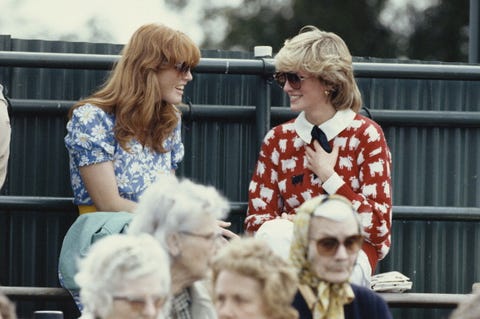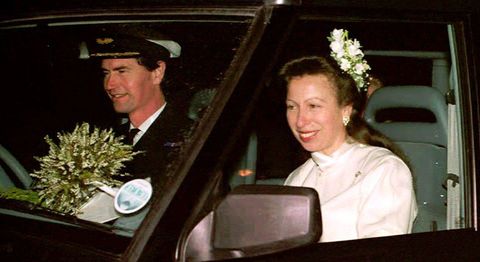Not unsurprisingly given the antics of Henry VIII, the British royal family doesn’t exactly have a reputation for being chill about divorce…let alone divorced royals getting remarried. Like, King Edward literally had to abdicate the throne just to marry the twice-divorced Wallis Simpson. And Princess Margaret’s almost-marriage to Captain Peter Townsend (a divorcé) was so scandalous that the Queen only agreed on one condition: Margaret would have to give up her spot in the line of succession.
Things have obviously changed over the years (for one, the Church of England started allowing divorced people to remarry in 2002), and multiple members of the royal family have used and appreciated the new rules. But there are still some complications and protocols for us to go over.
Divorce Is Allowed, but Not Encouraged
As anyone who watched The Crown already knows, the Queen eventually allowed (and actually encouraged) Prince Charles and Princess Diana to split up—but having the heir to the throne go through a public split wasn’t exactly ideal. In Charles and Diana’s case, the decision to separate was so official that British Prime Minister John Major announced it in December 1992. And then the Queen herself ended up asking Charles and Diana to divorce shortly the princess’s Panorama interview (and amid allegations of infidelity).
Royal Divorce Settlements Are Complicated
Again, we can look at Charles and Diana to see exactly how royal divorces go down—at least in terms of finances and the division of property. In Diana’s case, she was able to keep her apartments at Kensington Palace and was able to use the state apartments at St. James Palace for entertaining. Meanwhile, Diana got “$22.5 million in cash, as well as about $600,000 a year earmarked to maintain her private office,” per The New York Times’ reporting in 1996.
Psst: When it came to custody, Diana and Charles agreed to split time with their children, William and Harry.
Divorcées Can Keep Their Titles…Sometimes
Diana had to give up “Her Royal Highness,” but she got to keep using “Princess of Wales.” Similarly, Prince Andrew’s ex-wife Sarah Ferguson stopped being an HRH following their divorce but is still known as the “Duchess of York.” That said, Fergie would have to forgo that title should she remarry in the future—at least based on The New York Times’ 1996 report, where experts noted that if Diana remarried, “she would probably have to relinquish many benefits of the divorce agreement, like her home, the financing of her office and possibly the title ‘Princess of Wales.'”
And speaking of remarrying…
Royals Are Allowed to Remarry, but It’s Tricky
Despite initially claiming he had no intention of remarrying following his divorce from Princess Diana, Prince Charles re-married Camilla Parker Bowels in 2005. Meanwhile, the Queen’s daughter Princess Anne (who split with her first husband in 1992) also remarried, tying the knot with Timothy Laurence that same year.
However, both Charles and Anne’s second marriages were kinda sneaky. Princess Anne got married in Scotland because the Church of England didn’t permit remarrying at the time (again, this changed in 2002).
Meanwhile, Prince Charles and Duchess Camilla married in a civil ceremony, because apparently the idea of a future king (and future head of the Church of England) getting married for a second time in a religious ceremony was controversial—even though it was technically allowed at this point. The Queen didn’t attend, which was considered a snub until the palace shot reports down, saying at the time (per the BBC) that Charles and Camila “wanted to keep the occasion low-key” and “the Queen is attending the service of dedication and paying for the reception—this is not a snub.”
So, ahem, in conclusion: royals don’t love divorce, yet 3/4 of the Queen’s kids have gotten divorced, two have remarried, and somehow the world! keeps! turning!
Source: Read Full Article







